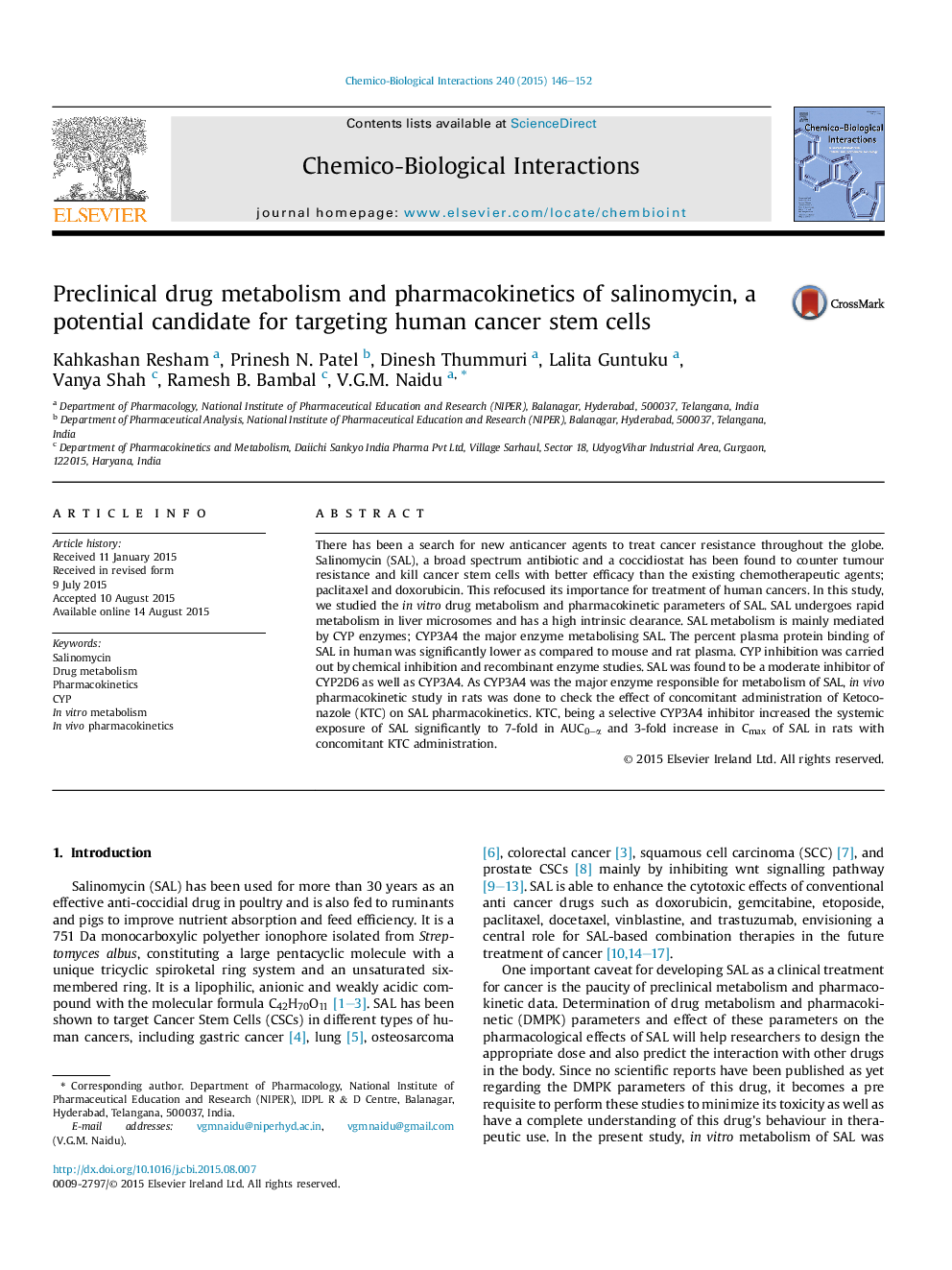| Article ID | Journal | Published Year | Pages | File Type |
|---|---|---|---|---|
| 2580127 | Chemico-Biological Interactions | 2015 | 7 Pages |
•We studied metabolism and pharmacokinetics of salinomycin.•CYP3A4 was the major enzyme to metabolize salinomycin.•Salinomycin was found to be a moderate inhibitor of CYP2D6 as well as CYP3A4.•In vivo in rats, ketoconazole lead to increase of 7-fold in AUC0–∝ of salinomycin.
There has been a search for new anticancer agents to treat cancer resistance throughout the globe. Salinomycin (SAL), a broad spectrum antibiotic and a coccidiostat has been found to counter tumour resistance and kill cancer stem cells with better efficacy than the existing chemotherapeutic agents; paclitaxel and doxorubicin. This refocused its importance for treatment of human cancers. In this study, we studied the in vitro drug metabolism and pharmacokinetic parameters of SAL. SAL undergoes rapid metabolism in liver microsomes and has a high intrinsic clearance. SAL metabolism is mainly mediated by CYP enzymes; CYP3A4 the major enzyme metabolising SAL. The percent plasma protein binding of SAL in human was significantly lower as compared to mouse and rat plasma. CYP inhibition was carried out by chemical inhibition and recombinant enzyme studies. SAL was found to be a moderate inhibitor of CYP2D6 as well as CYP3A4. As CYP3A4 was the major enzyme responsible for metabolism of SAL, in vivo pharmacokinetic study in rats was done to check the effect of concomitant administration of Ketoconazole (KTC) on SAL pharmacokinetics. KTC, being a selective CYP3A4 inhibitor increased the systemic exposure of SAL significantly to 7-fold in AUC0–α and 3-fold increase in Cmax of SAL in rats with concomitant KTC administration.
Graphical abstractFigure optionsDownload full-size imageDownload as PowerPoint slide
